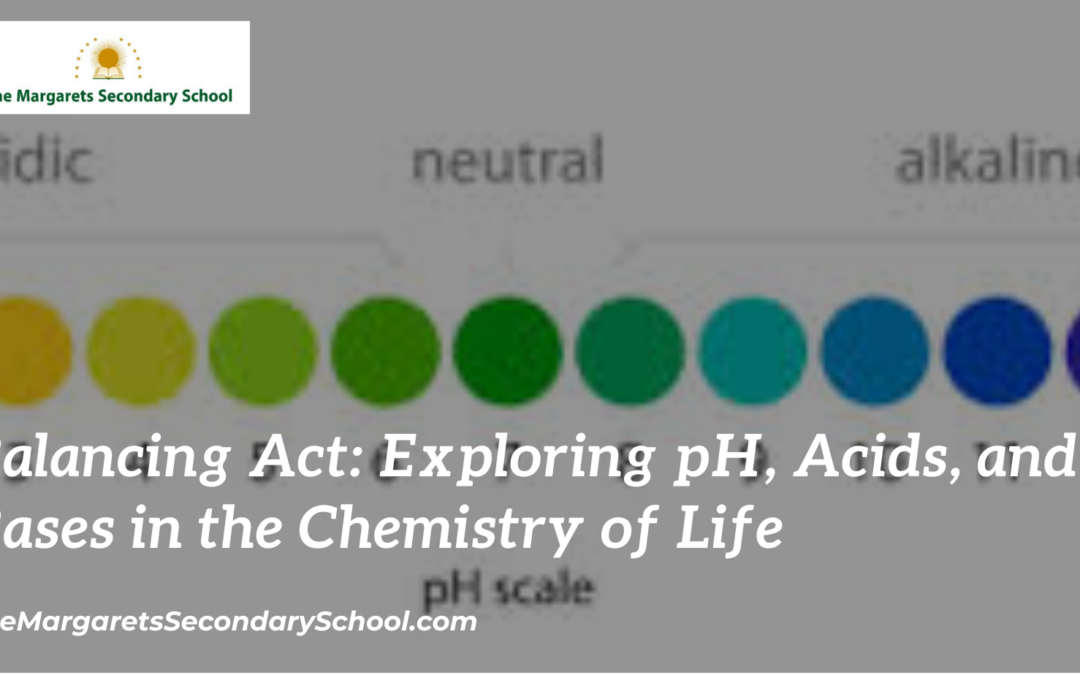pH, Acids, and Bases
In the intricate dance of chemistry, pH, acids, and bases take center stage as essential players that govern a wide range of biological and chemical processes. From the tang of citrus fruits to the delicate balance of our blood, these concepts shape our understanding of the world around us. This article delves into the world of pH, acids, and bases, uncovering their significance, characteristics, and the crucial roles they play in both nature and human endeavors.
pH: The Measure of Acidity and Alkalinity
pH, which stands for “potential of hydrogen,” is a measure of the concentration of hydrogen ions (H⁺) in a solution. It is a logarithmic scale that ranges from 0 to 14, where a pH of 7 is considered neutral. A pH below 7 indicates acidity, while a pH above 7 indicates alkalinity.
Acids: The Proton Donors
Acids are substances that release hydrogen ions (H⁺) when dissolved in water. This release of H⁺ ions increases the concentration of these positively charged particles in the solution, resulting in a lower pH value. Acids are characterized by their sour taste, ability to corrode metals, and role in turning blue litmus paper red.
Bases: The Proton Acceptors
Bases, also known as alkaline substances, are the counterparts to acids. Bases can either release hydroxide ions (OH⁻) or accept hydrogen ions (H⁺) from water. This results in a decrease in the concentration of H⁺ ions in the solution, raising the pH. Bases feel slippery to the touch and turn red litmus paper blue.
The pH Scale and Biological Significance
The pH scale is of paramount importance in biological systems. Many biochemical reactions, such as enzyme function and cellular respiration, are highly sensitive to changes in pH. Even slight deviations from the optimal pH range can disrupt these vital processes and compromise the functioning of living organisms.
Buffer Systems: Balancing Act in Biological Systems
Biological systems rely on buffer systems to maintain stable pH levels. Buffers are solutions that can resist changes in pH by either accepting or donating H⁺ ions as needed. In the human body, buffer systems in blood and other bodily fluids play a crucial role in maintaining a stable pH environment.
Applications and Implications
The concepts of pH, acids, and bases have far-reaching applications across various fields:
- Medicine: pH regulation is critical for maintaining the health of bodily fluids, including blood and cerebrospinal fluid. Acid-base imbalances can lead to serious medical conditions.
- Agriculture: Soil pH affects nutrient availability to plants. Adjusting soil pH can enhance crop yields and optimize plant growth.
- Environmental Impact: Changes in ocean pH, known as ocean acidification, have profound effects on marine ecosystems and organisms, particularly those with calcium carbonate shells or skeletons.
- Chemical Industry: Understanding the properties of acids and bases is essential for designing chemical reactions, producing materials, and developing products.
Nature’s Chemical Ballet
pH, acids, and bases are the dancers in nature’s chemical ballet. Their delicate interplay shapes the flavors of foods, determines the efficacy of cleaning agents, and influences the behavior of molecules at the cellular level. From the simple elegance of a lemon’s tang to the intricate biochemistry of our bodies, the understanding of pH, acids, and bases enriches our perception of the world and empowers us to navigate and manipulate the chemical landscapes that surround us.





